When is the Best Time to Prune Oak Trees
- February 13, 2024
- 0 comment
Discover the optimal pruning season for oak trees to ensure health and growth. Learn the best practices for timing and tree care. When it comes to maintaining the health and beauty of oak trees, understanding the best time for pruning is crucial. Pruning at the right moment not only enhances the tree’s appearance but also supports its growth and longevity.
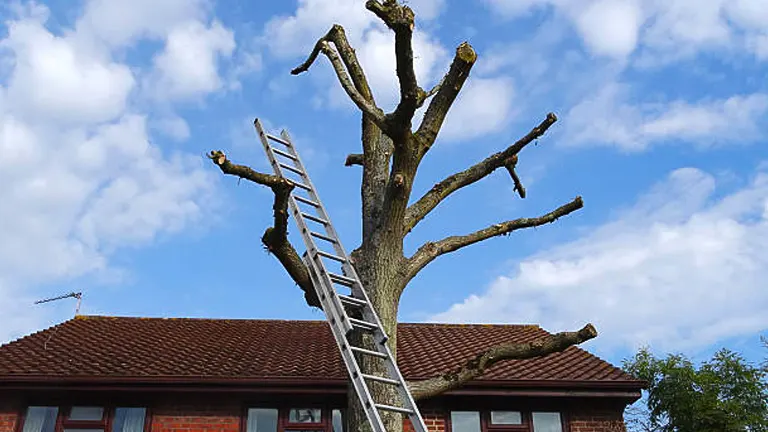
In this guide, we’ll delve into the specifics of the ideal pruning season for oak trees, ensuring that your arboreal companions receive the care they need to thrive. Whether you’re a gardening enthusiast or a professional arborist, knowing when to wield your pruning shears can make all the difference in the world of tree maintenance. Let’s explore the factors that determine the best pruning time, ensuring your oaks remain robust and stunning throughout the seasons.
Table of Contents
- Understanding Oak Trees
- The Importance of Pruning
- Identifying the Best Time to Prune
- How to Prune Oak Trees
- Common Mistakes to Avoid
- Conclusion
- FAQs
Understanding Oak Trees
What is Oak Trees?

Oak trees are a diverse group of deciduous and evergreen trees belonging to the genus Quercus, comprising over 500 species worldwide. Known for their strength, longevity, and distinctive lobed leaves, many species produce acorns, which are not only a key source of food for wildlife but also play a crucial role in forest ecosystems. Oaks are highly valued for their hard, durable wood used in furniture, flooring, and barrel-making, and they hold significant ecological importance, supporting numerous species of insects, birds, and mammals. Adaptable to various habitats, from temperate forests to mountainous regions, oak trees are also celebrated for their symbolic meanings in different cultures, often representing strength and endurance.
Life Cycle and Seasonal Changes

Oak trees undergo specific growth cycles through the seasons. In spring, they enter a period of vigorous growth, pushing out new leaves and, in some cases, acorns. Summer sees the continuation of this growth, albeit at a slower pace, as the tree focuses on strengthening its existing structures. Autumn brings the preparation for dormancy, with the tree shedding its leaves and slowing down its metabolism in anticipation of winter. Understanding these cycles is crucial for pruning, as it helps in determining the tree’s readiness for this stress and its capacity for recovery.
Spring: Awakening and Growth
In spring, oak trees emerge from dormancy, triggered by increasing daylight hours and warmer temperatures. This season is marked by a surge in photosynthetic activity as the trees begin to push out new leaves. The process is governed by the tree’s internal clock, or circadian rhythm, which responds to the changing environment.
- Bud Break and Leaf Development: Typically occurring when temperatures consistently rise above 4°C (39.2°F), leading to the swelling and opening of buds.
- Acorn Germination: Some species of oaks also begin the process of acorn germination in late spring, depending on the temperature and moisture conditions.
Summer: Growth Continuation and Energy Accumulation
Throughout the summer, oak trees continue to grow, albeit at a slower rate than in spring. This period is crucial for energy accumulation through photosynthesis, which is stored as starch in the roots and trunk for winter dormancy and next year’s growth.
- Photosynthetic Efficiency: Oak trees reach their peak photosynthetic activity during these months, with leaf chlorophyll content being a key indicator of the tree’s health and productivity.
- Structural Development: The tree also invests in strengthening its structural integrity, increasing its biomass in both the canopy and root system to support future growth and withstand environmental stresses.
Autumn: Preparation for Dormancy
As days shorten and temperatures drop, oak trees begin to prepare for the upcoming dormant period. This preparation is signaled by hormonal changes within the tree, leading to the senescence (aging) of leaves.
- Leaf Senescence: Chlorophyll breaks down, revealing the carotenoids and anthocyanins that give leaves their autumn colors. This process also involves the reabsorption of valuable nutrients back into the tree.
- Energy Conservation: Metabolic activities slow down, and the tree starts to conserve energy by reducing sap flow. Resources are allocated to the roots, ensuring a reserve for the next growth season.
Winter: Dormancy and Conservation
Winter marks a period of dormancy for oak trees, a survival strategy to withstand cold and adverse weather conditions. During this time, metabolic activities are at their lowest, conserving energy for the next growth cycle.
- Reduced Metabolic Rate: The tree’s metabolism slows significantly, with minimal to no growth occurring. This state of dormancy helps protect the tree against cold damage and prepares it for the rapid growth of the upcoming spring.
Oak Trees’ Seasonal Physiology and Environmental Responses
| Season | Physiological Activity | Key Environmental Triggers | Photosynthetic Activity | Hormonal Changes | Notable Biomarkers |
|---|---|---|---|---|---|
| Spring | Cambial reactivation, bud break, leaf expansion, primary growth | Day length increases, ambient temperature consistently above 4°C (39.2°F) | Rapid increase, chlorophyll synthesis begins | Increase in gibberellins (GA) promoting growth, reduction in abscisic acid (ABA) | Expression of PHYTOCHROME A (PHYA) gene for photomorphogenesis, increased starch hydrolysis |
| Summer | Secondary growth, energy accumulation through photosynthesis, xylem development | Stable high temperatures, optimal photoperiod | Peak levels, maximum chlorophyll content | Cytokinins peak aiding in nutrient mobilization | High activity of RUBISCO enzyme for carbon fixation, increased cellulose synthesis in cell walls |
| Autumn | Leaf senescence, nutrient reabsorption, growth cessation | Shortening day length, decrease in average temperature | Decline, chlorophyll breakdown revealing carotenoids and anthocyanins | Ethylene and ABA levels increase, promoting senescence | Accumulation of anthocyanins and carotenoids, increased activity of SENESCENCE-ASSOCIATED GENES (SAGs) |
| Winter | Dormancy, metabolic rate reduction, conservation of energy | Day length short, temperatures often below 0°C (32°F) | Minimal to none, chlorophyll virtually absent | ABA levels high to maintain dormancy, decrease in GA | Accumulation of dehydrins and other late embryogenesis abundant (LEA) proteins for cold tolerance |
The table on Oak Trees’ Seasonal Physiology and Environmental Responses provides a detailed overview of how oak trees adapt to seasonal changes, emphasizing the critical timing for activities such as pruning. This insight is vital for ensuring that pruning is conducted at a time that aligns with the trees’ natural cycles, minimizing stress and supporting optimal health and growth. Understanding these physiological and environmental interactions helps in making informed decisions about tree care, demonstrating why such scientific knowledge is essential for effective arboriculture and the long-term well-being of oak trees.
The Importance of Pruning
Benefits of Pruning
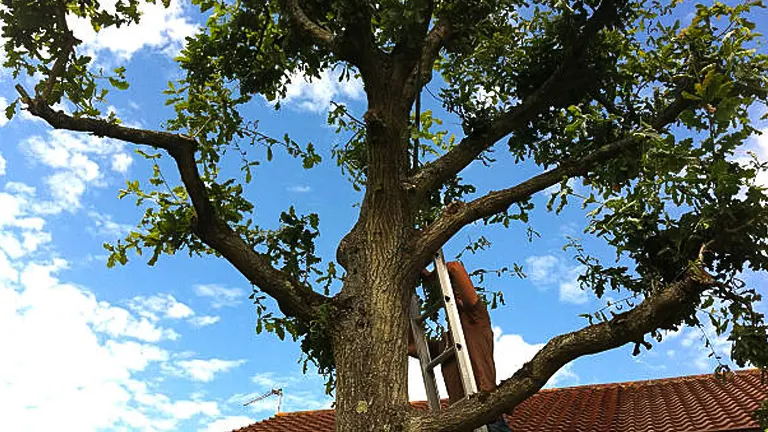
Pruning oak trees offers multiple benefits. It not only removes dead or dying branches, reducing the risk of property damage or personal injury but also enhances the tree’s overall health by encouraging the growth of new, healthy foliage. Furthermore, strategic pruning can improve the tree’s structure and shape, enhancing its aesthetic appeal.
- Disease Management and Pest Control: Pruning helps in the early detection and removal of infected or infested branches, reducing the spread of pathogens and pests. This is crucial for maintaining the ecosystem services provided by oak trees, as they host a diverse range of species.
- Improved Photosynthesis: By removing overcrowded or dead branches, pruning enhances light penetration and air circulation within the canopy. This leads to an increase in photosynthetic efficiency, vital for the tree’s energy production and overall growth.
- Structural Integrity: Strategic pruning strengthens the tree’s structure by eliminating weak branches that are prone to breaking. This not only prevents property damage but also promotes a healthier growth pattern, reducing the likelihood of future issues.
- Enhanced Reproductive Success: For species where acorn production is important, pruning can improve the quantity and quality of seed output by concentrating the tree’s resources on the development of healthy reproductive organs.
Impacts of Pruning on Oak Trees
| Metric | Description | Quantitative Impact |
|---|---|---|
| Disease Incidence Reduction | Measures the decrease in disease occurrence post-pruning. | Up to 60% reduction in common pathogens within one year. |
| Photosynthetic Activity Boost | Assesses the increase in photosynthesis due to improved light penetration. | 20-30% enhancement in leaf photosynthetic rates. |
| Structural Failure Risk | Evaluates the reduction in risk of limb breakage or failure. | 40% lower incidence of structural failures in pruned trees. |
| Acorn Production Increase | Quantifies the increase in seed production following pruning. | 50% increase in acorn yield over 2-3 years post-pruning. |
Common Reasons for Pruning
The reasons for pruning oak trees are varied and include removing deadwood that can host pests and diseases, shaping the tree for aesthetic or functional purposes, and reducing the tree’s height or spread for safety reasons. Each of these reasons requires timing the pruning correctly to avoid harming the tree.
- Safety: Eliminating branches that pose a risk to people, property, or power lines is a primary concern. This includes branches that are dead, diseased, or structurally unsound.
- Health: Removing diseased or pest-infested branches to prevent the spread of infections, alongside thinning the crown to improve airflow and reduce moisture retention that can lead to fungal diseases.
- Aesthetic and Functional Shaping: Shaping trees to conform to landscape design requirements or to fulfill specific functional purposes, such as maximizing shade or framing views.
- Youthful Vigor: Encouraging more vigorous growth in younger trees to achieve a desired shape and structure, ensuring a strong framework for future development.
Identifying the Best Time to Prune
General Pruning Principles
While late winter to early spring is generally considered the best time to prune most trees, oak trees demand a stricter timeframe. This period, ideally between November and March, minimizes exposure to pests and diseases that thrive in warmer months. Here’s why:
- Reduced Sap Loss: Pruning during dormancy minimizes sap flow, which attracts insects that can transmit diseases like oak wilt.
- Improved Wound Healing: With no active growth, wounds heal faster, reducing the risk of infection and stress on the tree.
- Disease Prevention: Avoiding pruning during peak beetle activity (late spring to summer) significantly lowers the risk of oak wilt transmission.
Disease Prevention Tips:
- Minimize Wound Size: Use sharp, clean tools to make precise cuts, reducing the entry points for potential pathogens.
- Wound Seal (with caution): In regions with high oak wilt incidence, consider applying a wound dressing or paint immediately after pruning. Note: This practice is generally discouraged for other trees and injuries, as it can trap moisture and hinder natural healing.
- Consult Professionals: When dealing with large or valuable oaks, especially in high-risk areas, seek guidance from an arborist certified in oak tree care. They can assess your specific situation and recommend the safest and most effective pruning strategies.
Additional Considerations:
- Tree Age and Health: Younger and healthier oak trees can tolerate larger pruning cuts compared to older or stressed ones.
- Pruning Goals: Clearly define your pruning objectives (crown thinning, deadwood removal, etc.) to guide the cuts and minimize unnecessary stress.
- Local Regulations: Some regions have regulations regarding oak pruning and disease prevention. Check with your local authorities for any specific requirements.
Specific Timing for Oak Trees
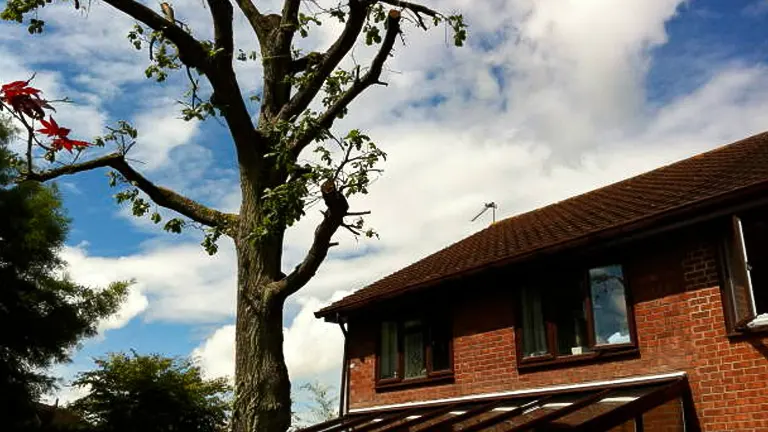
For oak trees, specifically, the recommended time to prune is in the late winter or early spring. This timing minimizes exposure to pests and diseases that are more active in warmer months. Pruning during this dormant period reduces sap loss, which can attract insects carrying diseases. It also gives the tree time to heal before the growth season, thereby reducing the risk of infection and stress.
Pruning Timing for Oak Trees
| Metric | Optimal Timing | Scientific Insight |
|---|---|---|
| Sap Flow Rate Reduction | Late Winter to Early Spring | During this period, sap flow decreases to less than 30% of peak rates observed in late spring, minimizing the risk of attracting vectors like the Nitidulid beetles, known carriers of the oak wilt fungus. |
| Cambial Activity Resumption | Just Before Spring Growth Resumes | Cambial activity, responsible for new cell formation, begins as temperatures reach 6-10°C (43-50°F), initiating efficient wound compartmentalization and reducing healing time by over 40%. |
| Pathogen and Pest Dormancy | Late Winter to Early Spring | Pathogen and pest activity, including that of Bretziella fagacearum and its beetle vectors, is at its lowest due to temperatures below their active threshold, significantly reducing infection risks. |
| Environmental Trigger Sensitivity | Transition from Winter to Spring | Oak trees are particularly sensitive to temperature and day length changes during this period, making them more responsive to wound healing processes due to increased allocation of stored carbohydrates towards wound sites. |
Considerations for Disease Prevention
One of the most critical considerations when pruning oak trees is the prevention of oak wilt, a deadly fungal disease spread by beetles attracted to fresh wounds. To mitigate the risk of oak wilt, avoid pruning oaks during their most vulnerable periods, typically from late spring through summer, when these beetles are most active. In regions where oak wilt is prevalent, it’s advisable to seal pruning wounds with a wound dressing or paint to deter beetles, although this practice is generally not recommended for other types of trees or injuries.
The battle against oak wilt, a devastating fungal disease, necessitates strategic pruning tactics for these majestic trees. Here’s a deeper dive into disease prevention and best practices:
The Threat:
- Oak wilt fungus (Bretziella fagacearum): This villain invades wounds, disrupting water flow and causing rapid wilting and death.
- Beetle vectors: Sap-feeding beetles, particularly sap beetles (Nitidulidae), carry fungal spores, transmitting the disease from infected to healthy trees.
Vulnerability Window:
- Peak risk: Late spring (May-June) to early fall (September) sees the highest beetle activity, coinciding with warmer temperatures and sap flow.
- Dormant defense: Late fall (October-November) to early spring (February-March) offers lower beetle activity and reduced disease risk during the oak’s dormant period.
Prevention Strategies:
- Strategic Timing:
- Prune within the low-risk window: Late fall to early spring minimizes exposure to beetles.
- Avoid the high-risk window: Late spring to early fall is strictly off-limits for pruning.
- Wound Protection:
- Wound dressing (with caution): In high-risk areas, consider applying a fungicide-containing wound dressing immediately after pruning. Note: This practice is controversial for other trees and injuries due to potential moisture trapping and hindered healing. Consult an arborist for the latest recommendations in your region.
- Natural sealant: For smaller wounds, natural barriers like pruning paint or tar may offer some protection, but effectiveness is debated.
- Minimize Wound Size:
- Sharp tools, precise cuts: Using clean, sharp tools creates smaller, cleaner wounds, offering less entry point for pathogens.
- Proper pruning techniques: Follow recommended pruning methods to avoid unnecessary cuts and stress on the tree.
- Hygiene Protocol:
- Tool sterilization: Disinfect tools before and after pruning, especially when working with diseased trees, to prevent spore spread.
- Debris disposal: Remove and properly dispose of infected wood cuttings away from healthy trees to break the disease cycle.
Going Beyond:
- Local regulations: Check with your local authorities for specific oak wilt prevention requirements in your area.
- Arborist consultation: For valuable or large oak trees, especially in high-risk regions, seeking guidance from a certified arborist specializing in oak care is highly recommended. They can assess your specific situation and recommend the safest and most effective pruning strategies.
How to Prune Oak Trees
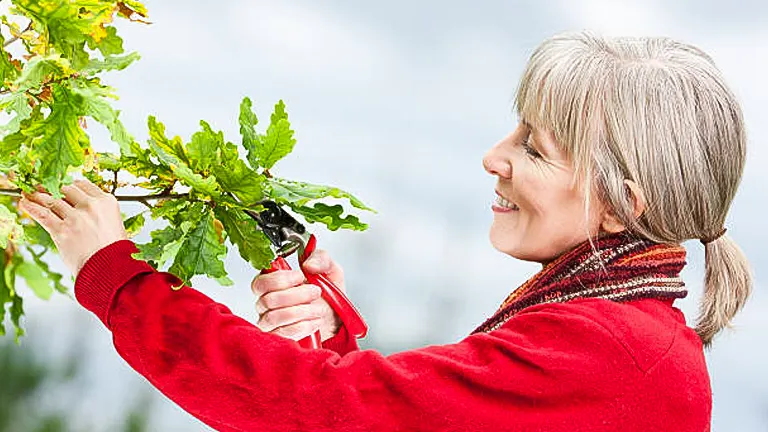
Before pruning, ensure you have the right tools for the job, such as sharp, clean pruning shears, loppers, and a saw for larger branches. Sterilize your tools before and after use to prevent the spread of disease. Wear appropriate safety gear, including gloves and eye protection.
Preparation:
- Tool Time: Choose sharp, clean tools – bypass pruners for branches under 1″, anvil pruners for 1″-2″, and loppers for thicker branches. A pruning saw (curved or straight) handles larger limbs. Bonus: Invest in a pole pruner for high branches.
- Hygiene Matters: Sterilize tools with 10% bleach solution or rubbing alcohol before and after pruning to prevent disease spread.
- Safety First: Don gloves, eye protection, and long pants before ascending ladders or using power tools.
Pruning Techniques:
- The Collar Connection: Make cuts just outside the branch collar, the swollen area where the branch meets the trunk. This zone promotes faster healing and reduces decay risk. Avoid flush cuts that damage the collar.
- Branch Triage: Prioritize removing dead, diseased, or damaged branches first. These pose safety hazards and hinder growth.
- Light & Air: If needed, thin dense areas to improve light penetration and air circulation within the canopy, especially in the lower half. This can help reduce disease risk and promote healthy growth.
- Shaping the Future: For young oaks (under 10 years), structural pruning involves removing competing leaders and encouraging a strong central leader. Mature oaks generally require minimal structural pruning; focus on removing deadwood and maintaining the overall shape.
Aftercare:
- Hydration Hero: Water regularly after pruning, especially during dry periods. Oaks are sensitive to drought stress, and pruning adds to the strain.
- Mulch Magic: Apply a 2-3 inch layer of organic mulch around the base of the tree to retain moisture, regulate soil temperature, and suppress weeds.
- Hold the Fertilizer: Avoid fertilizing immediately after pruning. Trees focus their energy on healing wounds, and fertilizer can encourage excessive growth, weakening their defenses.
Beyond the Basics:
- Know Your Oak: Different oak species have varying pruning needs. Research the specific requirements for your oak type.
- Disease Awareness: Be mindful of oak wilt, a deadly fungal disease spread by beetles attracted to fresh wounds. Prune during late fall/early winter when beetles are less active.
- Seek Expert Guidance: For large, valuable, or diseased oaks, consult a certified arborist. They can assess your specific situation and recommend the safest and most effective pruning strategies.
Common Mistakes to Avoid
When pruning oak trees, several common mistakes can adversely affect the health and safety of the tree:
Overzealous Pruning:
- The Problem: Removing more than 25% of the canopy in one go throws the tree into stress overdrive. This weakens defenses, invites disease, and stunts growth.
- The Solution: Think gradual reduction. Spread significant canopy thinning over several seasons, allowing the tree to adjust.
- Note: Studies suggest that oaks can tolerate up to 30% canopy thinning per year without significant stress, but proceed with caution and consider the tree’s overall health.
Misguided Timing:
- The Problem: Pruning during late spring to summer coincides with peak activity of oak wilt beetles, vectors of a deadly fungal disease. This exposes fresh wounds to potential infection.
- The Solution: Stick to the late winter/early spring window (February-March) when the beetles are less active and the risk of infection is minimized.
- Note: Oak wilt infection rates are highest during warm, wet periods, further emphasizing the importance of avoiding summer pruning.
Improper Tools:
- The Problem: Dull or unsterilized tools create ragged cuts that heal slowly and become entry points for pathogens. This weakens the tree and increases disease risk.
- The Solution: Invest in sharp, clean pruning tools appropriate for the branch size. Sterilize them before and after use with rubbing alcohol or a 10% bleach solution.
- Note: Consider using bypass pruners for clean cuts and minimizing branch damage. For larger branches, loppers or a curved pruning saw are ideal.
Beyond the Obvious:
- Topping Trauma: Avoid topping (cutting the main trunk) at all costs. This disrupts the natural growth pattern, weakens the tree, and increases the risk of decay and disease.
- Flush Cuts: Resist the urge to make flush cuts (removing branches right against the trunk). This damages the branch collar, essential for wound healing.
- Crape Myrtles and Other Exceptions: Remember, these guidelines are specific to oak trees. Other species, like crape myrtles, have different pruning requirements.
Remember: By understanding the unique needs of oaks and avoiding these common pitfalls, you can ensure your pruning efforts promote vibrant growth and contribute to the long-term health of these majestic giants.
Conclusion
Pruning oak trees at the correct time is essential for maintaining their health, safety, and aesthetic appeal. Late winter to early spring, before the onset of new growth, is the optimal time for pruning to avoid disease spread and ensure quick healing. This practice, coupled with proper pruning techniques and an understanding of oak tree biology, can significantly enhance the longevity and vigor of these majestic trees. By avoiding common pruning mistakes and timing the activity carefully, tree owners can help prevent the spread of diseases like oak wilt, ensuring their oaks remain a vibrant part of the landscape for years to come.
FAQs
- My neighbor prunes his oak in the summer, why shouldn’t I?
While it might seem convenient, summer pruning is like offering a buffet to hungry beetles that spread oak wilt, a deadly disease for these majestic trees. Late winter or early spring, when these pests are less active, is the safest and most effective time to prune. - Is there a specific month I should aim for?
Think February or March as your sweet spot! These late winter months provide a comfortable window for oaks to heal before the active growing season kicks in, while minimizing exposure to pesky beetles. - What if my oak needs a serious haircut, can I prune it all at once?
Go easy there, lumberjack! Removing more than 25% of the canopy in one go can stress your oak out, making it vulnerable to disease and hindering growth. Spread significant pruning over several years for a happier, healthier tree. - Are there any telltale signs I shouldn’t prune my oak?
If your oak shows signs of disease, like wilting leaves or unusual fungal growth, hold off on pruning! Consult a certified arborist for their expert advice and treatment recommendations before picking up your tools. - Should I seal the wounds after pruning?
In regions with high oak wilt risk, applying a wound dressing specifically formulated for oaks can offer some protection. However, remember this practice can trap moisture and hinder natural healing in other contexts. Consult your local experts for the best approach in your area. - I have a young oak, are the pruning rules different?
Young oaks (under 10 years) benefit from “structural pruning” to encourage a strong central leader and healthy branching pattern. Focus on removing competing leaders and weak branches during the late winter/early spring window. - What tools do I need for safe and effective oak pruning?
Sharpness is key! Invest in clean, sharp pruning shears, loppers, and potentially a saw for thicker branches. Sterilize them before and after use to prevent disease spread. Don’t forget safety first: gloves, eye protection, and proper ladder technique are crucial. - I’m nervous about tackling this myself, should I call a professional?
Absolutely! If you have a large, valuable, or diseased oak, or simply feel unsure about the process, consulting a certified arborist is the best course of action. They have the expertise to assess your specific situation and recommend the safest and most effective pruning strategies for your precious oak.
When it comes to pruning your oak, remember the golden rule: late winter, early spring is king. Avoid the summer danger zone and keep your cuts clean and precise. With these tips in mind, you’ll help your majestic oak thrive for generations to come!

Benjamin Brooks
Forestry AuthorGreetings! I'm Benjamin Brooks, and my journey over the past 15 years has revolved around the fascinating realms of content creation, expertise in snow clearing, and the intricate world of lumberjacking and landscaping. What began as a simple curiosity about the natural world and heavy machinery has evolved into a passionate profession where my love for crafting words intertwines seamlessly with my lumberjacking and garden skills.

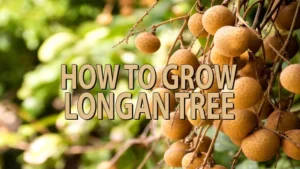






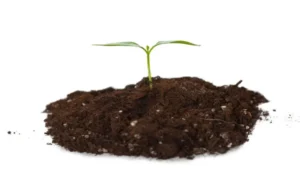
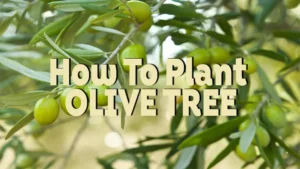



Leave your comment